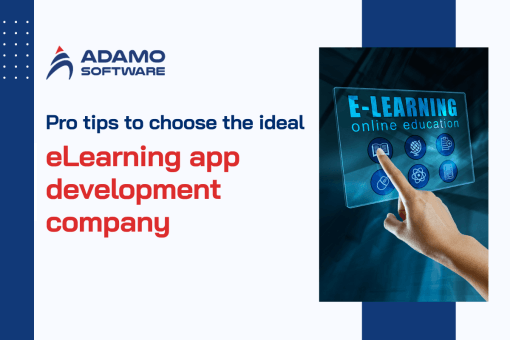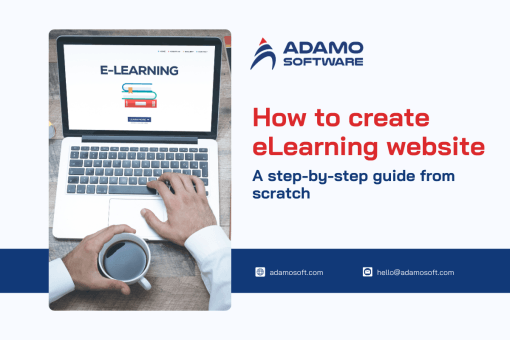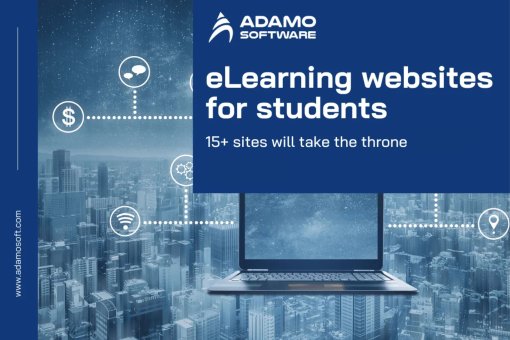The Future of Machine Learning in Education: Use Cases and Examples
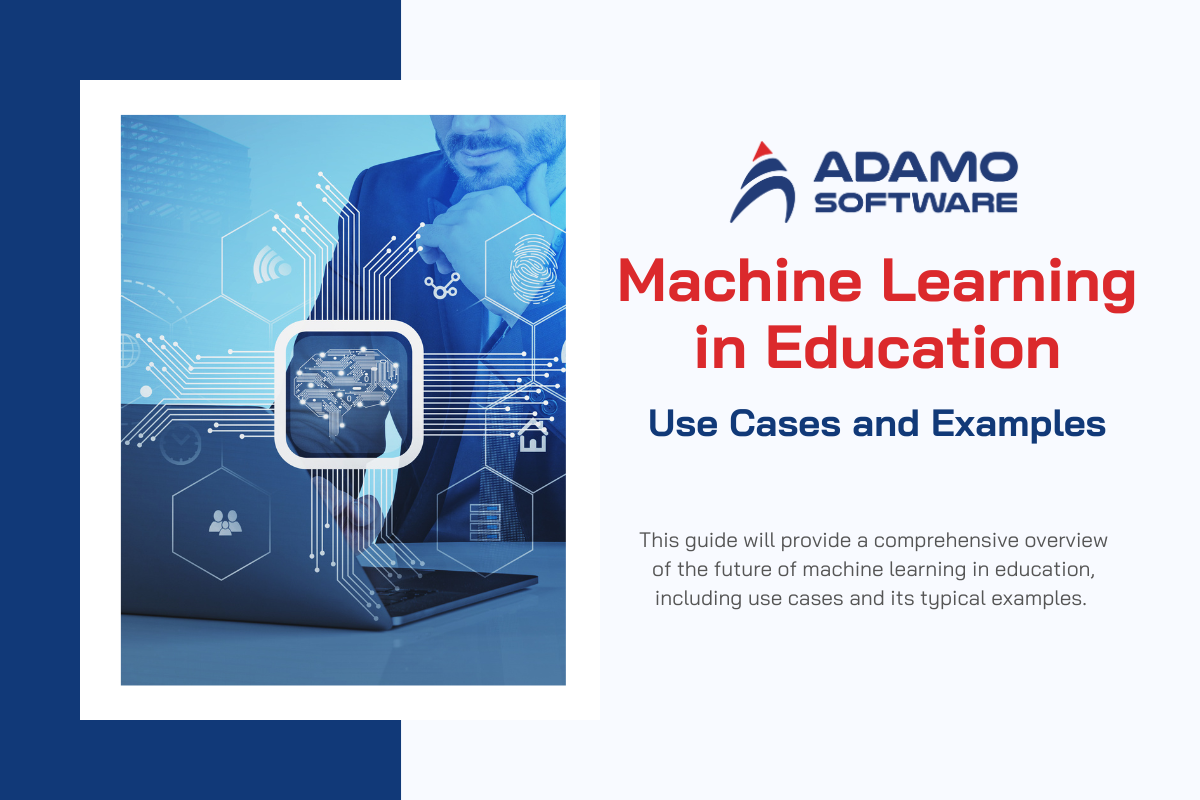
Today, machine learning (ML) is being applied in many fields, especially in education. Machine learning uses statistical methods to allow computers to “learn” from data without being explicitly programmed. One of the most notable benefits of integrating machine learning and data science into education is the profound impact on student achievement and helping to close their achievement gaps, allowing to create a positive and effective learning environment.
For businesses, some companies use ML as a powerful tool that brings great commercial benefits because it applies to startups with minimal resources and established businesses with abundant budgets.
This article offers a comprehensive review of machine learning in education, with various use cases and typical examples, so that you can make an informed decision about integrating machine learning into your educational institution or company.
I. Understanding Machine Learning and ML in Education
1. What is machine learning?
In simple terms, machine learning is a type of AI that involves developing algorithms that allow computers to learn from data and make predictions or decisions based on that data without the need for human support. This learning process takes place iteratively, allowing the system to continuously refine and update to adapt to new information.
In the field of education, the application of machine learning algorithms to change and enhance the teaching and learning experience. Machine learning allows teachers to personalize learning pathways, predicting student difficulties by leveraging data about their performance, preferences, and learning styles to improve teaching activities.
2. Leverage data for better understanding
Machine learning algorithms are based on huge amounts of data, including text, images, numbers, and audio recordings. As algorithms process this data, they recognize patterns and relationships in the information. Therefore, a data-centric approach is essential for algorithms to learn effectively and make accurate predictions.
3. Make predictions
After algorithms learn a large amount of input, they can make intelligent guesses about the new data. In an educational context, this means identifying students who may be at risk and tailoring learning materials to each student’s unique strengths and weaknesses. Machine learning education tools use these predictions to support and enhance the overall learning experience.
4. Continuous improvement
Machine learning systems continuously improve by analyzing new data, refining models, and improving their ability to recognize patterns and relationships. This process of continuous improvement allows machine learning systems in education to adapt to new information and make more accurate predictions over time, benefiting both students and educators.
II. How Machine Learning Brings Benefits to Education Industry
Using machine learning in education will bring many positive impacts and improve the teaching and learning process in many different ways. Education experts predict machine learning will become an indispensable part of the education industry in 2024 and the coming years due to the many benefits of machine learning in education.
Here are 8 key benefits of machine learning in education:

1. Greater Global Access to Online Learning
Machine learning in education enhances global accessibility to eLearning materials, such as video lectures, eBooks, and discussion forums, by utilizing natural language processing and deep learning to translate and transcribe content quickly, accurately, and cost-effectively. This approach reduces the high costs associated with manual translation.
2. More Efficient Courses
Predicting analytics in machine learning education tailors courses to meet every student’s needs. By identifying skill gaps and delivering specific content based on learner performance, machine learning creates effective learning experiences. Learners can track their progress, including how long they spend on each section and their degree of interaction with course materials, ensuring a customized learning journey.
3. Reduced Administrative Workload
Machine learning and education integration automate many administrative tasks in eLearning courses, such as onboarding, scheduling, providing instructions, tracking attendance, and grading. This automation allows educators to focus on more creative and human-centric activities, enhancing overall teaching quality.
4. Personalized Learning Pathways
Traditional education often lacks differentiation, favoring the homogenous nature of educational courses. Machine learning education systems address this by providing personalized learning pathways tailored to individual learners’ needs. This differentiated instruction optimizes teaching effectiveness without increasing educators’ workloads.
5. Enhanced User Experience
Implementing machine learning in education improves the overall user experience for teachers, learners, and administrators. Personalizing course content and streamlining administrative tasks boost engagement and motivation, leading to better learning outcomes. Additionally, self-service capabilities help students who may be hesitant to approach teachers or staff.
6. More Accurate Assessment and Grading
Sometimes, manual grading can be affected by human error and bias, while machine learning systems don’t have these limitations. Machine learning systems offer fairer and more accurate grading and assessments by eliminating human error and bias. These algorithms can also automatically detect plagiarism in students’ work, ensuring academic integrity.
7. Accelerated Research
Machine learning greatly benefits higher education research departments through advanced data science capabilities like text mining. These tools facilitate the discovery and management of extensive research repositories, expediting the research process.
8. Improved Enrollment Processes
Educational institutions leverage machine learning in advertising and marketing to attract suitable students. These systems also enhance security and fraud detection during enrollment, ensuring a smooth and safe process for all applicants.
III. 10 Machine Learning in Education Use Cases
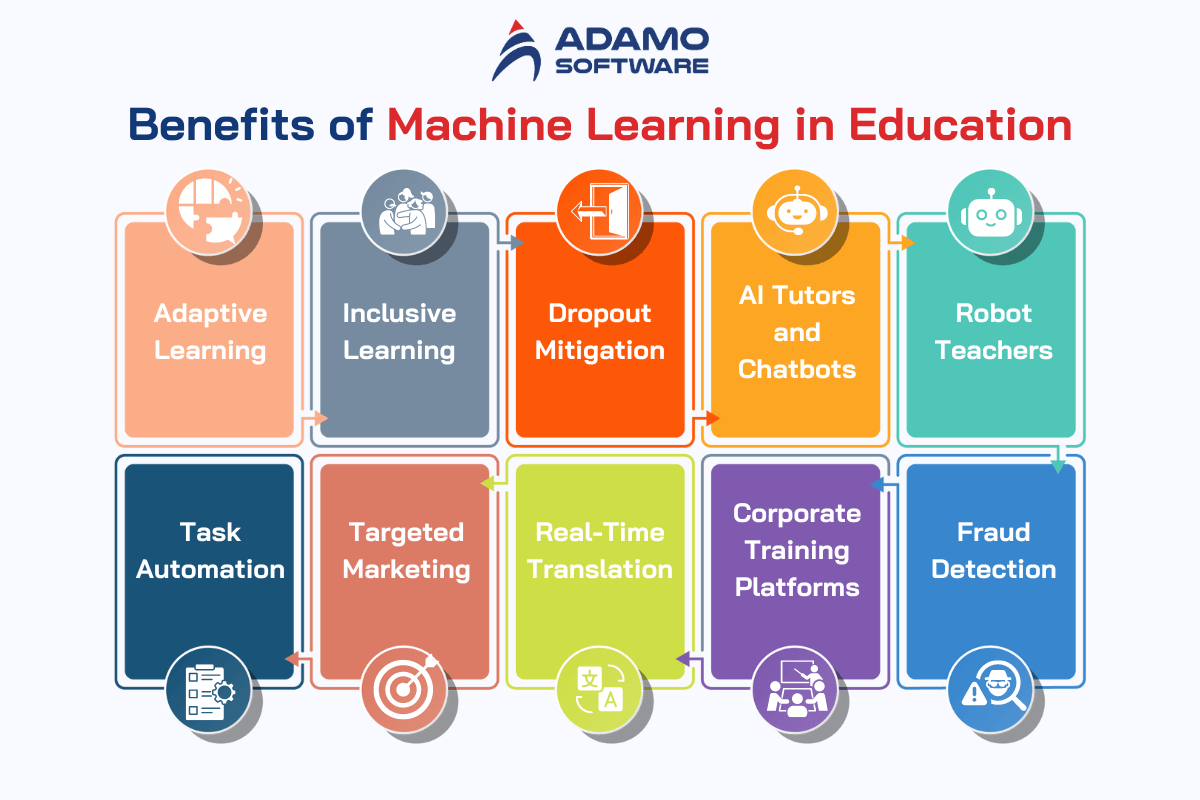
1. Adaptive Learning
Machine learning in education harnesses predictive data analytics to address the unique needs of each student. This technology is integrated into various eLearning platforms to monitor parameters such as exercise completion time, platform usage, logins, and test results. These insights assess student performance, engagement, and learning patterns, and forecast learning outcomes.
For instance, adaptive learning platforms like MobyMax, SchooLinks, Carnegie Learning’s LiveLab, and Kidaptive can modify individual learning activities in real time and help teachers plan personalized curricula. These tools are especially beneficial for delivering specialized educational programs for students with specific conditions like autism.
Also read: How Data Analytics in Education Transforms Education
2. Inclusive Learning
Machine learning and artificial intelligence-driven technologies are making inclusive education a reality. Students have various social backgrounds, learning styles, and characters. Although some have learning, speaking, hearing, or other physical or mental disabilities, all deserve equal opportunities to study.
Inclusive education based on machine learning can break down social biases and improve access without compromising the quality of education. In addition, assistive technologies (AT) and learning systems enable disabled or older individuals to access online education and overcome learning barriers.
3. Dropout Mitigation
Predictive analytics in education systems can mitigate dropout by following variables such as poor performance and low attendance to identify students at risk of dropping out. After pinpointing these at-risk students, educators can implement personalized initiatives to motivate them and address knowledge gaps, effectively reducing dropout rates.
4. AI Tutors and Chatbots
Nowadays, students increasingly interact with virtual assistants. NLP-powered tutors and chatbots perform various educational and administrative functions, such as recommending eLearning content, engaging students with quizzes, moderating online communities, and providing 24/7 support for student enrollment. These AI-driven tools enhance both the educational and administrative aspects of learning.
5. Robot Teachers
Robotic teachers equipped with computer vision and NLP bring virtual interactions into the real world. These educational robots are often used in early childhood education to help children develop creative and social skills, especially for introverted children. For example, Singapore utilized such robots in its education system.
6. Task Automation
Machine learning in education also automates many administrative tasks, such as test grading, scheduling, and attendance tracking. Most of the educators spend half their working hours on preparation, evaluation, and other purely clerical tasks. This automation reduces their workload, allowing them to focus on more creative and human-centric tasks.
For example, Century Tech, a UK-based company, offers ML-based solutions that use big data analytics and cognitive neuroscience to improve student performance and reduce teacher workload by automating monotonous tasks.
7. Targeted Marketing
Machine learning education tools also enhance targeted marketing efforts. By analyzing user data from social media and other sources, ML-powered systems identify potential learners and target them with personalized ads for eLearning platforms or educational institutions. This approach increases subscriptions and matriculations, respectively.
8. Real-Time Translation
Thanks to the availability of real-time NLP-based translation and transcription solutions, machine learning enables breaking down language barriers to broaden the reach of an educational program and promote inclusivity.
Some tools like Microsoft Azure Cognitive Services Translator and Amazon Translate provide real-time translation and localization services for video lessons, papers, and other eLearning content, making educational programs accessible to a global audience.
9. Corporate Training Platforms
Machine learning in education helps businesses address challenges such as faster innovation cycles and talent shortages. ML-powered eLearning systems optimize training budgets, calculate ROI, and assess workforce expertise to generate upskilling plans. Platforms like SAP Learning Hub and LinkedIn Learning utilize ML tools to generate suitable upskilling plans.
10. Fraud Detection
Machine learning in education is widely used in many schools and is crucial for detecting fraudulent activities in online learning environments. ML algorithms will analyze student responses, mouse movements, and keystrokes to identify cheating patterns and plagiarism. Teachers can easily detect plagiarism by comparing submitted tasks with students’ lesson materials or available online sources.
For instance, tools like Proctorio use ML to detect cheating behaviors and verify student identities through biometric data and facial recognition, ensuring the integrity of online exams.
IV. Examples of Machine Learning in Education
Machine learning in education is revolutionizing how we teach and learn. Here are some well-known examples:
1. UC Berkeley grading scale
At UC Berkeley, the Gradescope tool is used to streamline the grading process during peak periods. This tool leverages machine learning in education to help teachers compare student work against a predetermined list of criteria, ensuring an accurate performance assessment.
2. University of Michigan’s M-Write
The automatic text analysis tool M-Write was developed by the University of Michigan using machine learning principles. It allows analysis of writing assignments to identify which students may need help and supports them in drafting and revising their work.
3. UC San Diego’s adaptive tutoring platform
UC San Diego’s online bioinformatics course features an intelligent tutoring system (ITS) to continuously analyze students’ learning paths. This adaptive platform uses data to fine-tune course content for each student and provide useful data on learner performance to teachers and tutors at regular stages.
4. Grammarly
Grammarly checker and plagiarism detector Grammarly has over 30 million daily users and is widely used by teachers and students. The platform is based on machine learning in education and deep learning algorithms for natural language processing. It improves writing by learning the user’s writing style and identifying common errors, making it a powerful grammar and plagiarism checker.
5. Alphary
Natural language processing (NLP) solution developed by Intellias. Alphary helps improve language learning by applying artificial intelligence and machine learning in education for semantic analysis and automated feedback. The goal of this application platform is to redefine the user’s English learning experience. This app helps increase learner engagement with gaming and personalized experiences.
6. Duolingo
Duolingo makes learning a foreign language a game-like experience and has over 500 million users. Using data and machine learning in education, the app platform has continuously improved the course by considering the nuances of different languages. Contributing to its position as the most downloaded educational app in the world with a valuation of $4 billion.
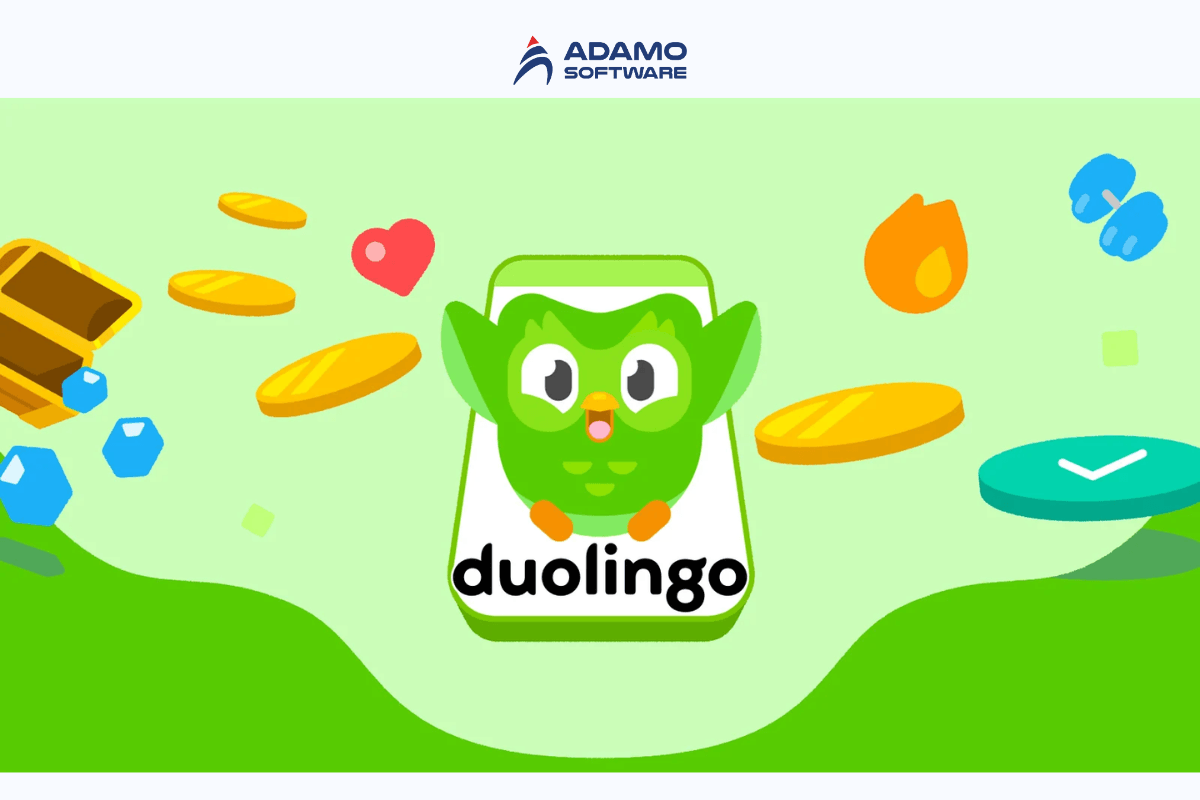
7. Course Hero
Course Hero serves as a hub for instructors and students. It is an online learning platform that provides study guides, practice exercises, notes, step-by-step solutions, and resources. Other e-learning resources. Course Hero uses Amazon Machine Learning to help students and teachers navigate a rich store of learning materials and select documents and information related to the topics of most interest to learners.
8. DreamBox Learning
DreamBox Learning delivers personalized K-12 math and reading curriculum to students by leveraging Intelligent Adaptive technology and machine learning in education. The tools compile data on the number of lessons and time spent on each lesson to identify areas where students need additional support. It also allows teachers to strengthen their knowledge with professional development courses.
9. Mainstay
Mainstay enhances digital communication between students and academic staff by integrating behavioral intelligence into AI-generated responses. Responses are generated from research that takes into account special factors such as cultural context and sensitivities. These features make it easier for students to connect to relevant resources and to be able to determine the best time to escalate a conversation to a teacher, admissions counselor, or other educational staff member when needed.
10. Riiid Labs
By applying AI and machine learning in education, Riiid Labs’ platform provides students with what is called an “Exponential Learning Experience”. The company’s platform collects data through micro-interval assessments and monitors testing behaviors. It uses AI tutors and coaches to provide detailed guidance and encouragement. The school will then use AI Tutors or AI Coaches to provide in-depth guidance and encouragement promptly, helping students retain information as they learn.
11. Quizlet
Quizlet is an online learning tool that helps users create quizzes, flashcards, and diagrams. As a result, the company can leverage data about users and user content to explore how students can learn more effectively using statistics and machine learning in education. The learning support platform is a solution created from this research that helps detect new terms that students are struggling with and prioritize them in future sessions.
12. Century
Century’s learning platform helps complete diagnostic assessments and considers each student’s unique learning path. Using diagnostic assessments reveals gaps in learning. Century’s AI-powered features provide recommendations on topics where students need the most help, and periodically reintroduce content to ensure students don’t forget what they learned. have learned.
13. Trivie
Trivie aims to make employee training more effective by providing online learning and assessment services. Its AI technology sends learning aids to help employees retain knowledge over the long term. Trivie’s AI technology then sends learning boosters after these initial interactions, helping to extend learning retention by more than 90% up to a year later.
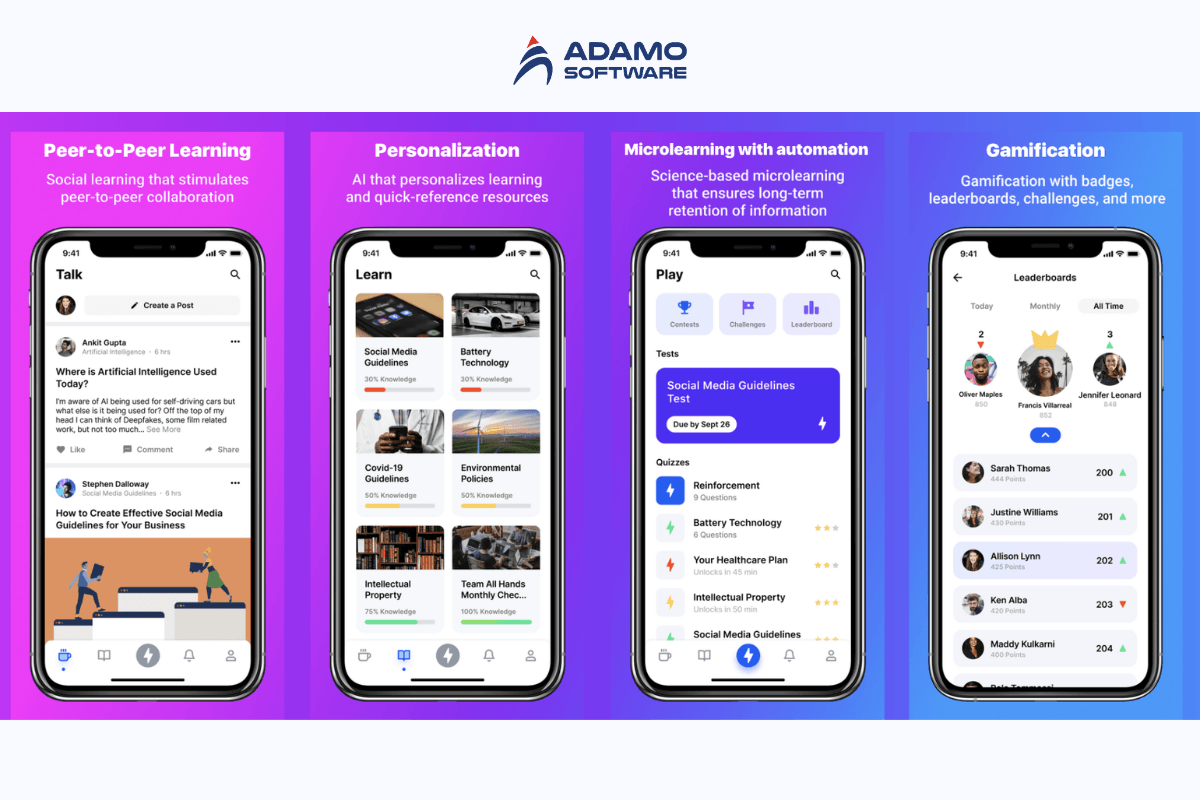
14. Querium Corporation
Math and other subjects can be the most challenging for some students. So Querium developed a digital learning solution.
Students studying on Querium’s platform can leverage StepWise AI as a master tutor who is available to support them 24/7 and provide instant insights on mistakes made and potential next steps. follow so students can do it. Instead of continuing to take fruitless steps, students can quickly recognize their mistakes and correct them immediately.
15. Thinkster Math
Thinkster Math combines AI and machine learning in education with individualized math tutoring. For children who need math support, Thinkster will combine AI and machine learning tools to provide personalized math tutoring services.
First, each student takes an assessment and receives a detailed report to understand his or her strengths and weaknesses. Each student will then work with a private tutor to learn according to their curriculum and complete online math exercises accompanied by instructional videos. Provides instant detailed information about errors and next solution steps, helping students quickly correct errors and find results.
16. Cognii
Cognii’s AI-powered virtual learning assistant provides virtual tutoring and rapid scoring of open-ended responses, as well as study and review tools. Machine learning in education is used to personalize and improve student learning activities. Enable Cognii to play a vital role in the future of education. This company currently has a total funding capital of more than 1 million USD.
17. Knowre
Knowre is tackling math anxiety and making math more accessible with an algorithm-based curriculum and other support features. The Knowre Math tool leverages data insights to identify student improvement areas, while the Walk Me Through tool allows students to engage with instructional videos and in-depth support. Teachers often apply Knowre solutions as a supplement to traditional education, contributing to creating a more dynamic learning environment for learners.
V. Final Thoughts
Integrating machine learning in education has great potential to enhance the learning experience. As we look to the future, it is clear that machine learning in education will continue to grow, delivering more effective, comprehensive, and relevant educational experiences.
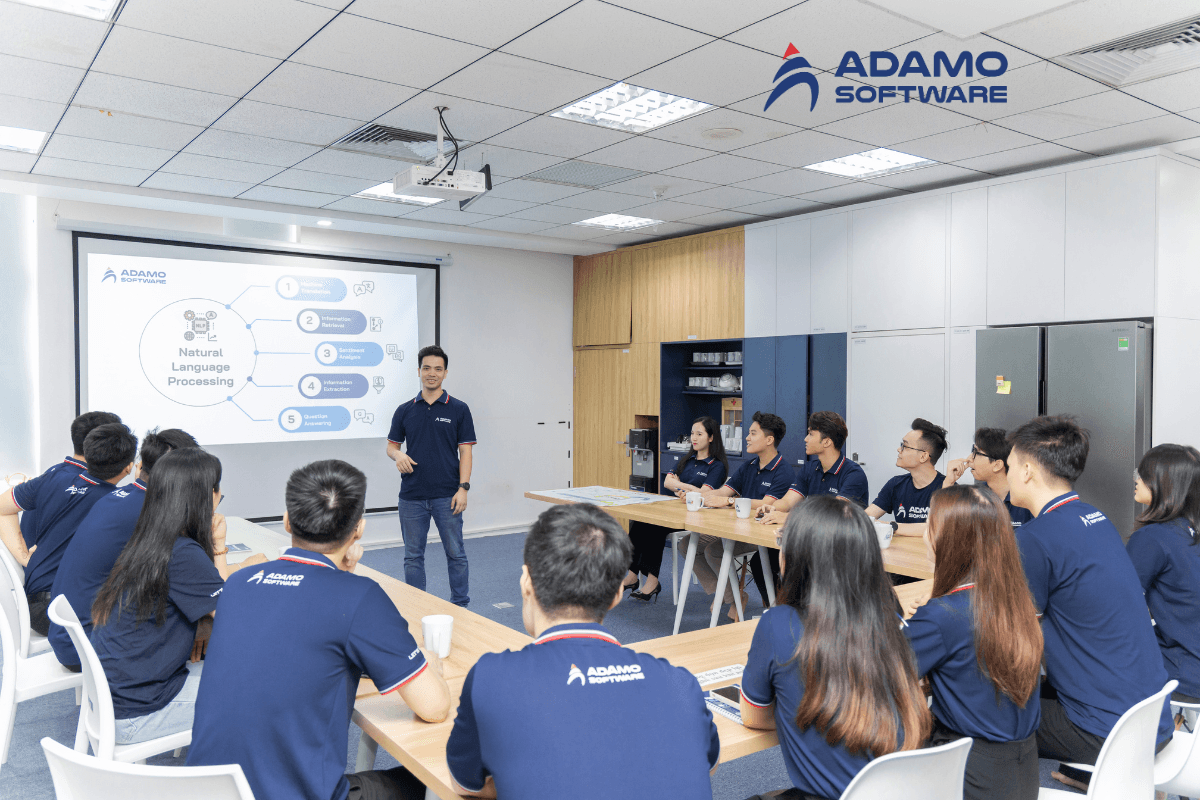
Adamo Software is one of the leading companies in the field of mobile application development in Vietnam. Our experienced engineers have created innovative AI-based solutions that ensure that educational institutions can effectively harness the power of machine learning. With a commitment to advanced technology and user-centricity, Adamo Software will support you with optimal educational application development solutions. If you want to know more information about Adamo, please contact us for free.






